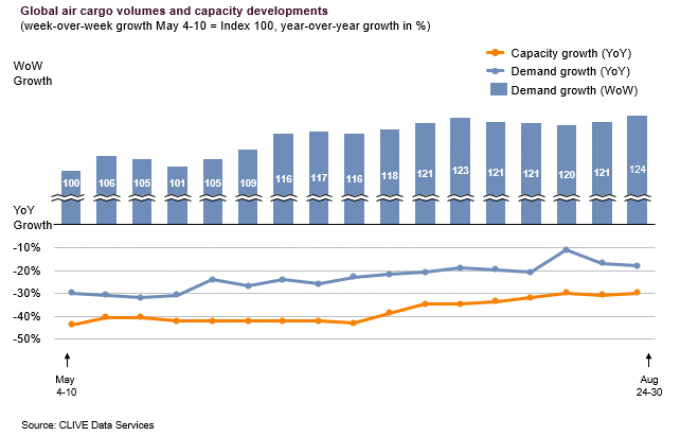Airlines rethink strategy as ecommerce to US begins decline
Shippers and forwarders are waiting to see how airlines manage their capacity before locking into ...

August may traditionally be the ‘silly season’ – or slack season, in freight terms – but air cargo load factors are some 8% higher than a year ago, while volumes are down just 17% from 2019.
In the last week of August, volumes were just 4% lower than a year earlier on China to Europe lanes, showing that fears of a lack volumes after the PPE peak have not materialised.
The industry has come a long way since April, when volumes were ...
Asia-USEC shippers to lose 42% capacity in a surge of blanked sailings
USTR fees will lead to 'complete destabilisation' of container shipping alliances
New USTR port fees threaten shipping and global supply chains, says Cosco
Outlook for container shipping 'more uncertain now than at the onset of Covid'
Transpac container service closures mount
DHL Express suspends non-de minimis B2C parcels to US consumers
Zim ordered to pay Samsung $3.7m for 'wrongful' D&D charges
Flexport lawsuit an 'undifferentiated mass of gibberish', claims Freightmate

Comment on this article